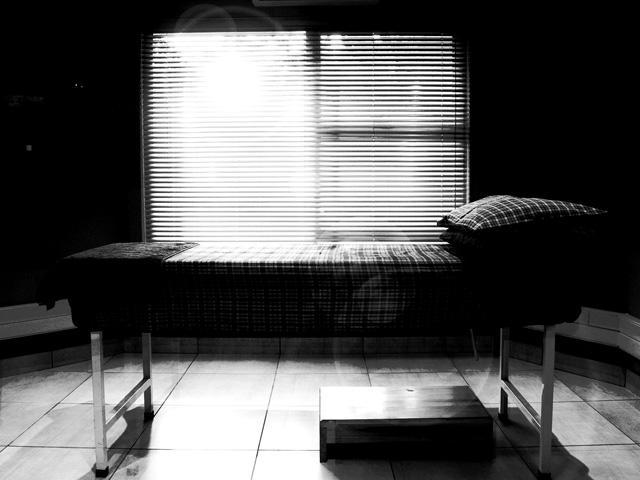
Hip Exercises – Rooms

Rustenburg, 0299
Tel: +27 (0)14 592 8322
Netcare Ferncrest/Life
Peglerae/Medicare
Tel: +27 (0)14 592 8322
Hip Rehabilitation after surgery
(Total Hip Replacement)
PROGRESSIVE EXERCISES
EXERCISES SHOULD NEVER BE EXCESSIVLY PAINFULL
REPEAT ALL EXERCISES APPROXAMITALY 10 TIMES
1 - Calf Raises
b. Push up on your toes.
c. Slowly lower your heels.
d. Once this is comfortable try with one leg.
2 - Hamstring exercises
1. Lie down on your stomach.
2. Bend your knee upwards toward your buttock SLOWLY.
b. Heel-ups
1. Stand at a table.
2. Make sure your operated leg is straight.
3. Bend the operated knee backwards up to 90°.
4. Slowly straighten the knee.
3 - Straightening
1. Stand close to a stable surface.
2. Lift your knees alternatively as high as possible.
3. Ie. March on the spot
b. Wall squats 1
1. Stand with your back against the wall.
2. Make sure your toes face forward and your feet are hip width apart.
3. Keep your knees in line with your toes.
4. Tighten your buttocks and hamstring muscles.
5. Keep them tight as you slowly bend your knees and slide down the wall into the squat position.
6. DO NOT BEND MORE THAN 40°.
7. Push up, placing most of your weight on your heels.
8. Do not straighten your knees completely.
4 - Stepping
1. On a low/small step.
2. Keep your back straight.
3. Step up with the healthy leg.
4. Make sure your knee stays behind your toes.
5. Bring your operated leg up.
6. Step back down with your healthy leg first.
7. Later: attempt climbing the step sideways.
b. Operated leg
1. Keep your back straight.
2. Place your operated leg on the step.
3. Keep your healthy sides toes on the floor.
4. Put half your weight on the heel of the foot.
5. Make sure your knee stays behind your toes.
6. Hold 5-10 seconds.
7. Lower the operated leg.
8. When you can do this without any pain climb the step with your operated leg first.
9. Later: attempt climbing the step sideways.
1 - Abduction
b. Make sure your hip and shoulder are in line.
c. Keep your leg straight.
d. Lift the operated leg up towards the ceiling
e. Hold 2-5 seconds.
2 - One leg balance
b. Now stand on your painfull leg. Keep your eyes open. Attempt to keep your balance for 1 minute. Repeat 3 times.
c. Repeat steps 1-2 with your eyes closed.
3 - Squats – no pain or discomfort!
1. Stand against a wall.
2. Flatten your back.
3. Slide down the wall bending your hips and knees up to 90°.
4. Remember to keep your knees in line with your toes.
5. Most of your weight should be on your heels, ie behind your knees.
6. When this is comfortable move away from the wall. Start with holding onto a stable surface for balance.
b. Sit to stand
1. Stand up and sit down on a chair.
2. Your weight should be behind your knees, on your heels.
3. Make sure your knee stay in line with your toes and do not pass your toes when standing up.
4. Now try this on a exercise mat or balance board.
5. Later try this while using only one leg.
1 - Walking program
b. Increase daily to improve cardiovascular fitness.
c. Please remember no treadmill walking as it causes increased compression on the joints.
2 - Theraband
b. The leg taking the weight must always be slightly bend.
c. Hip flexion
1. Tie the theraband in a loop around the leg of a bed/table.
2. Bend the knee slightly.
3. Stand with the theraband behind you.
4. Move your leg forward.
5. Make sure you move at the hip not at the knee.
d. Hip abduction
1. Tie the theraband in a loop around the leg of a bed/table.
2. Keep the leg straight.
3. Move the leg outwards against the theraband.
4. Later try walking sideways against the theraband.
e. Knee flexion
1. Tie the theraband around both legs.
2. Stand straight with your leg hanging straight down.
3. Bend your knee backwards against the rubber. (ie heel up).
You may start gym exercises with your biokineticist.
Please avoid running, jogging, jumping rope, plyometrics and other high impact activities.

Recent Comments